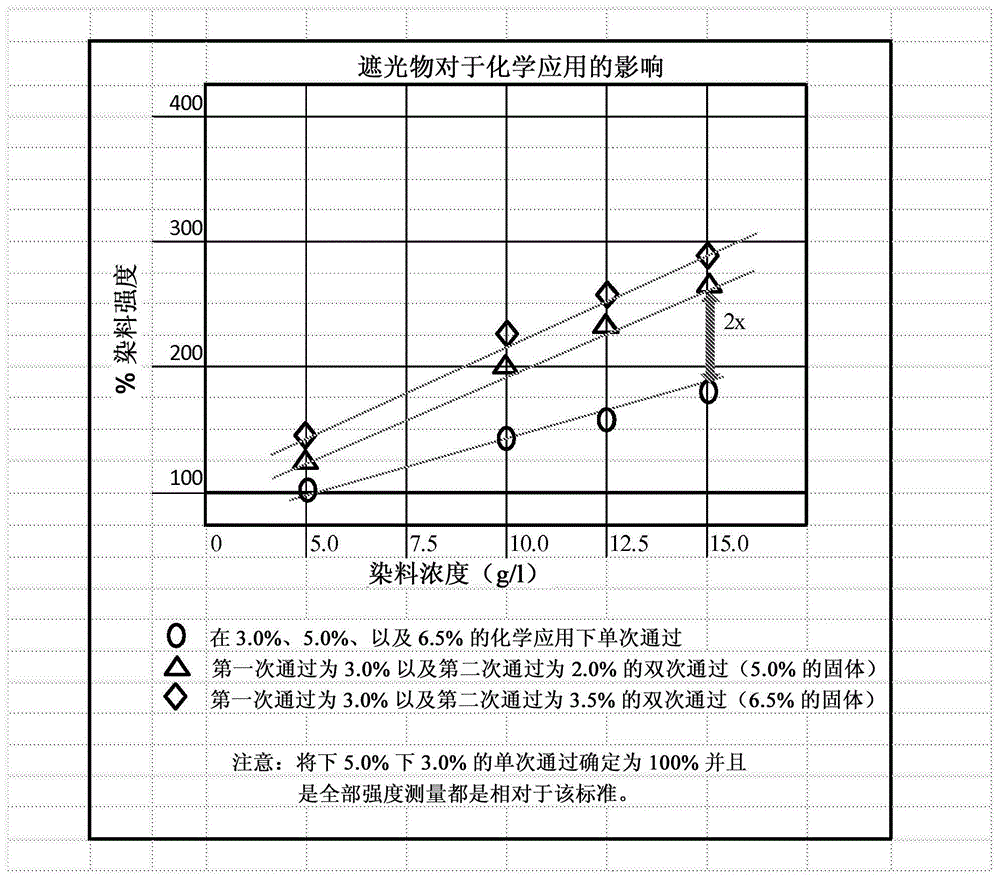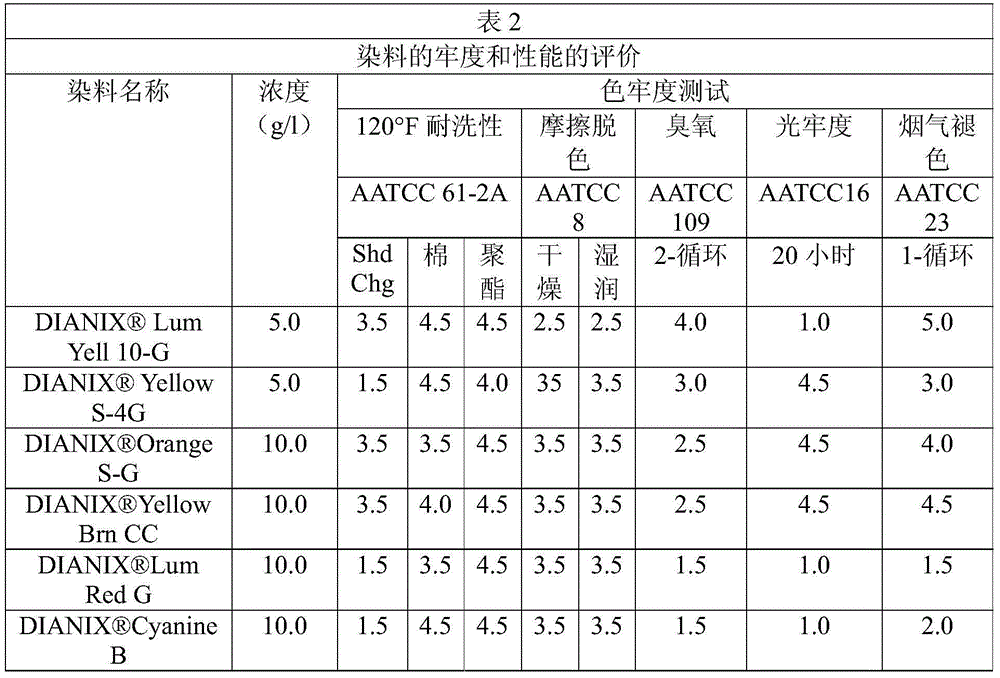Ring dyed polymer treated materials
A technology of polymers and dyes, applied in the field of materials processed by ring dyeing polymers, can solve the problems of friction firmness and other problems
- Summary
- Abstract
- Description
- Claims
- Application Information
AI Technical Summary
Problems solved by technology
Method used
Image
Examples
Embodiment
[0062] Example #1 ( Processing of woven fabrics)
[0063] 8.2oz / yd 2 3xl left-hand twill fabric 100% cotton fabric (having a greige structure of 108 ends / inch×56 picks / inch) desizing, washing, bleaching and mercerizing. A solution containing 3% solids at 80°F was prepared by adding 6% dye binding composition (a combination of 45% solid polyurethane aqueous solution and 5% solid cellulose acetate to give 50% total solids content) and water. Using a pressure set at 40 psi, hard rubber rollers and steel rollers are used to pad the fabric through a mangle. The moisture absorption of the fabric is 88%, resulting in 2.6% of solids added to the fabric. The fabric was processed through an 8-zone gas fired tenter at 380°F using each zone setting at 40 yards / minute. The fabric is completely dried and cured (at the exit of the tenter).
[0064] Example #1A (Dyeing of fabric processed in the form of clothes)
[0065] The mock pant leg was prepared and washed as follows: 2.0 kg of the treat...
PUM
| Property | Measurement | Unit |
|---|---|---|
| particle size | aaaaa | aaaaa |
| particle diameter | aaaaa | aaaaa |
| shrinkage | aaaaa | aaaaa |
Abstract
Description
Claims
Application Information
 Login to View More
Login to View More - R&D
- Intellectual Property
- Life Sciences
- Materials
- Tech Scout
- Unparalleled Data Quality
- Higher Quality Content
- 60% Fewer Hallucinations
Browse by: Latest US Patents, China's latest patents, Technical Efficacy Thesaurus, Application Domain, Technology Topic, Popular Technical Reports.
© 2025 PatSnap. All rights reserved.Legal|Privacy policy|Modern Slavery Act Transparency Statement|Sitemap|About US| Contact US: help@patsnap.com



